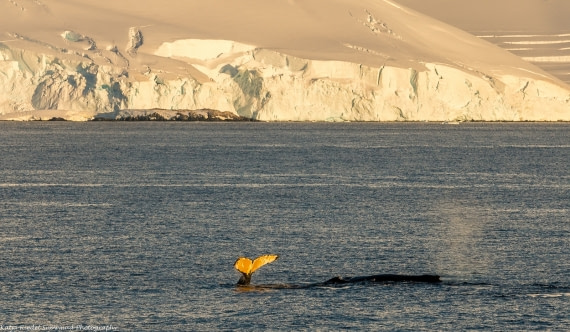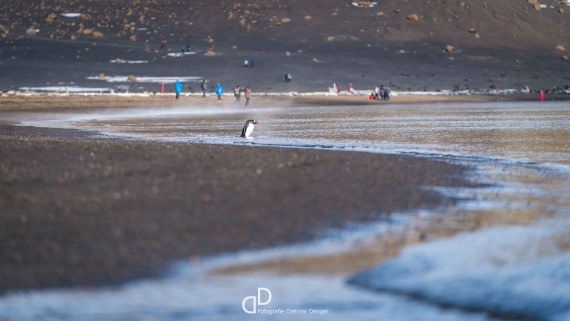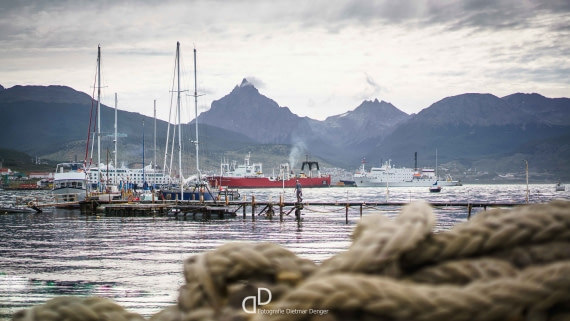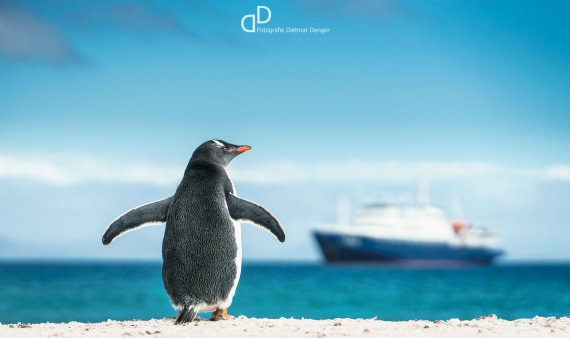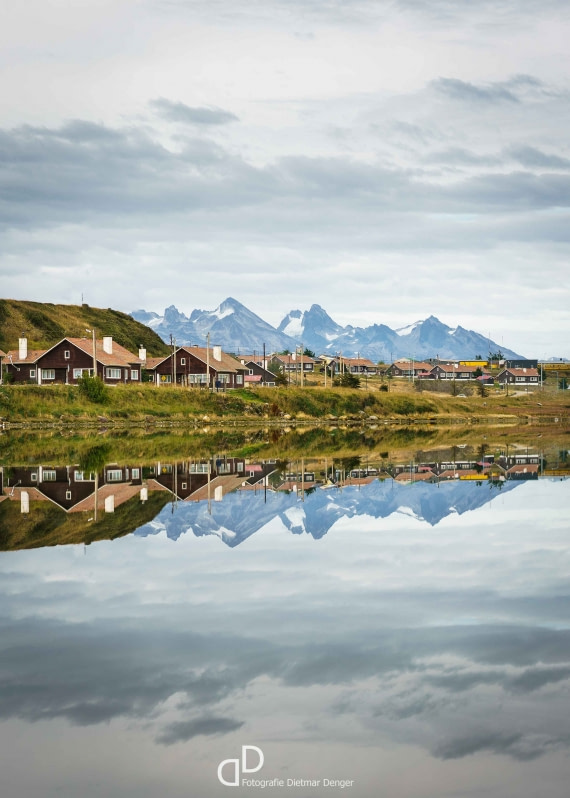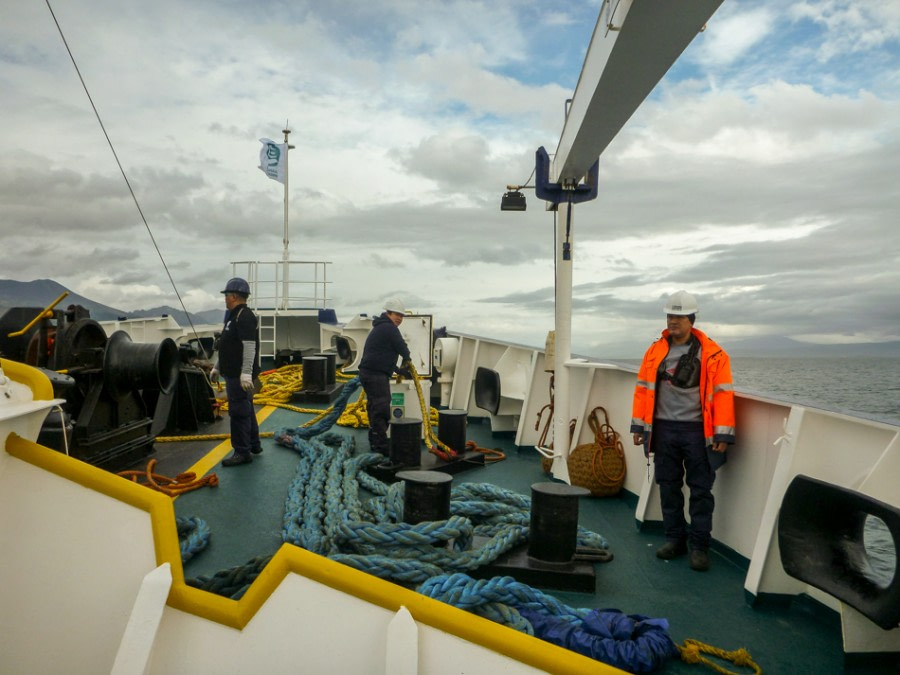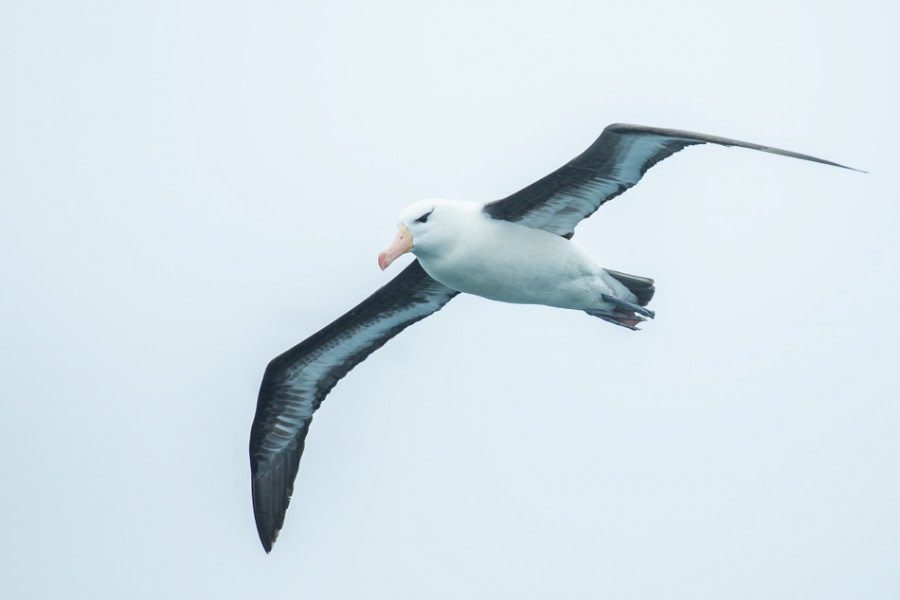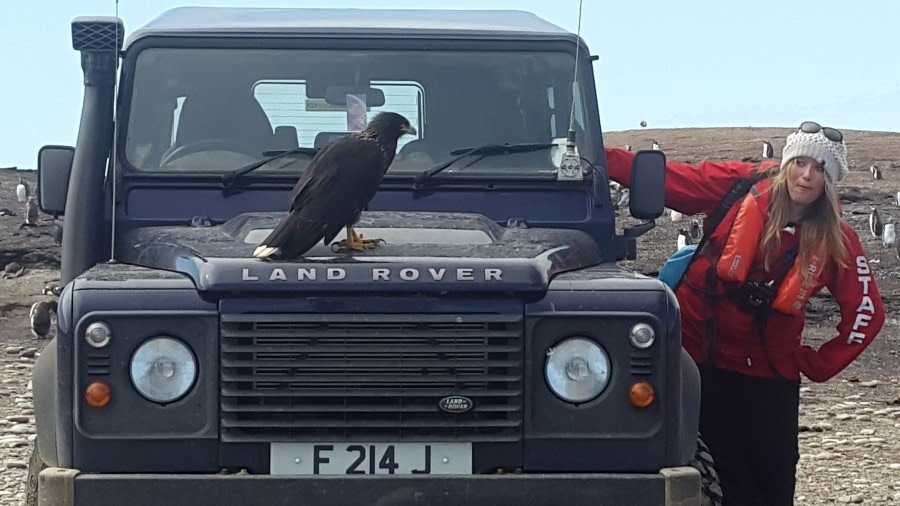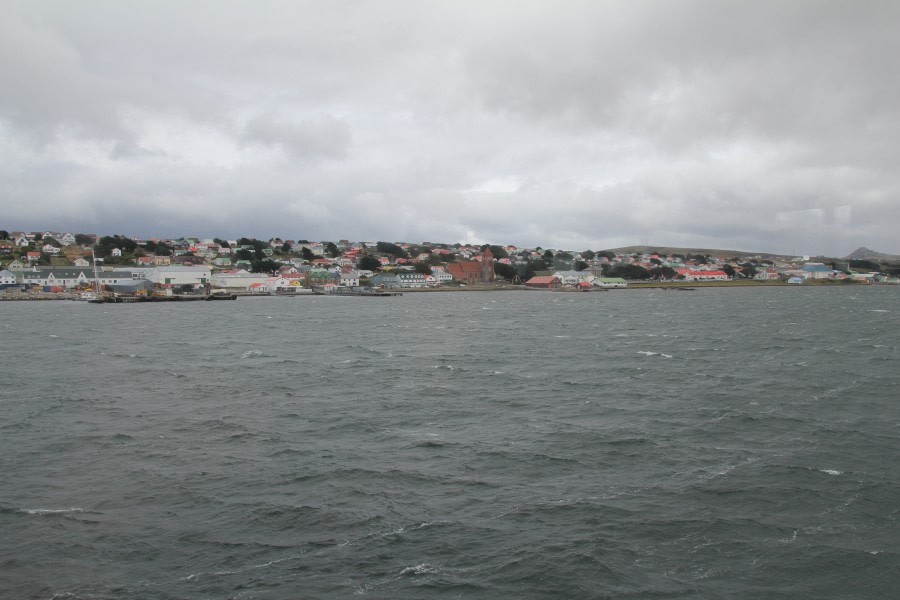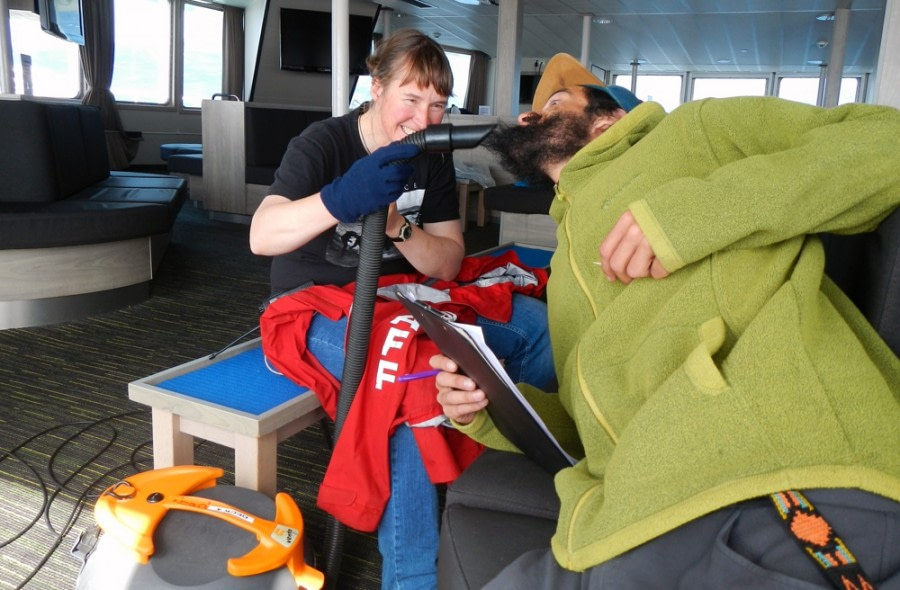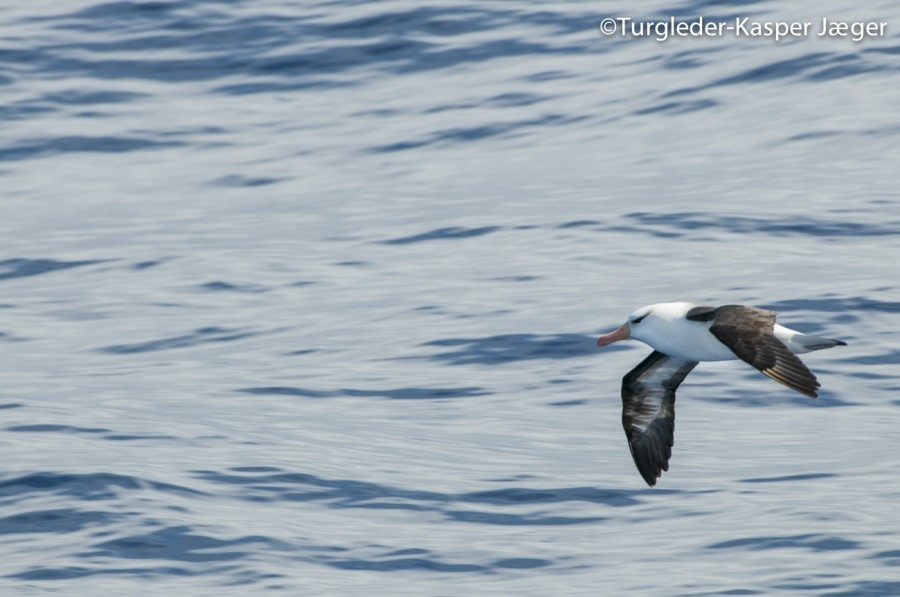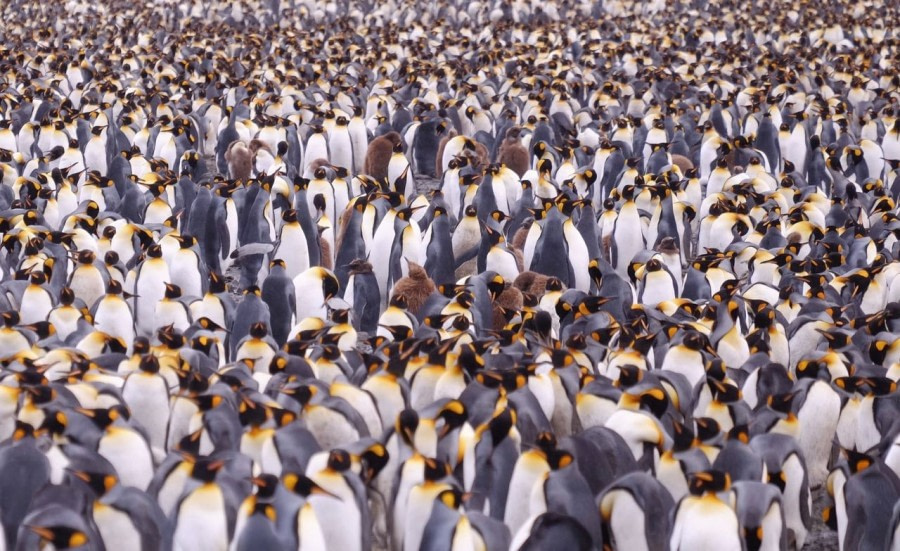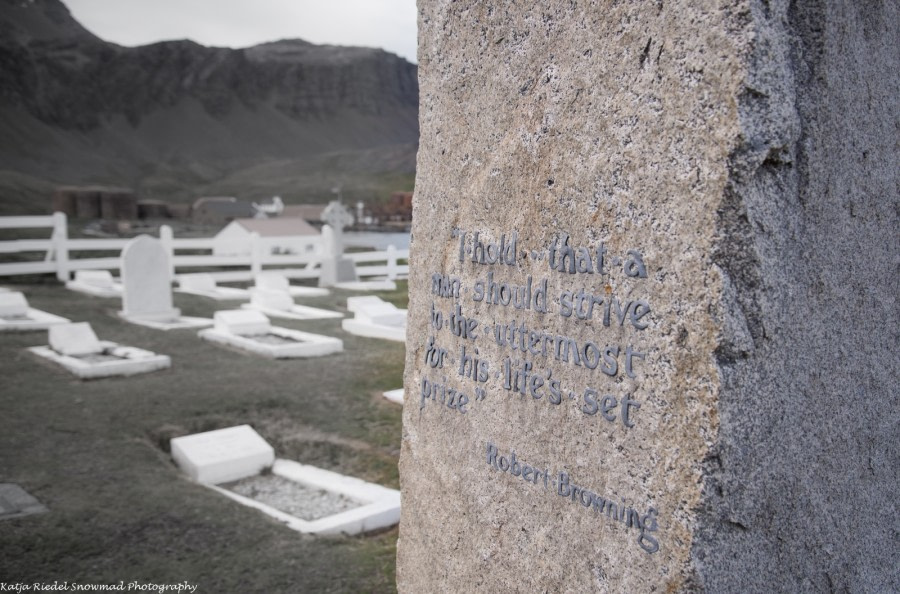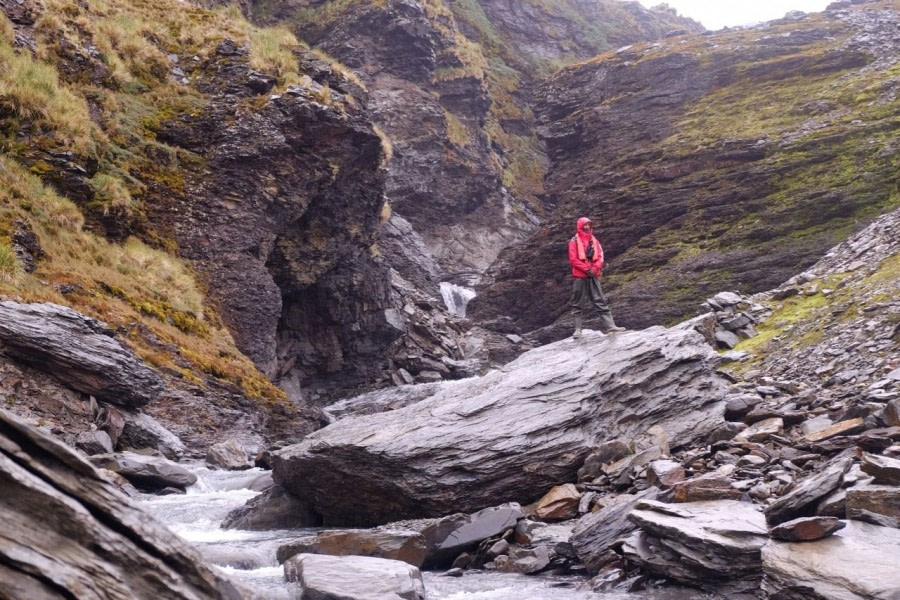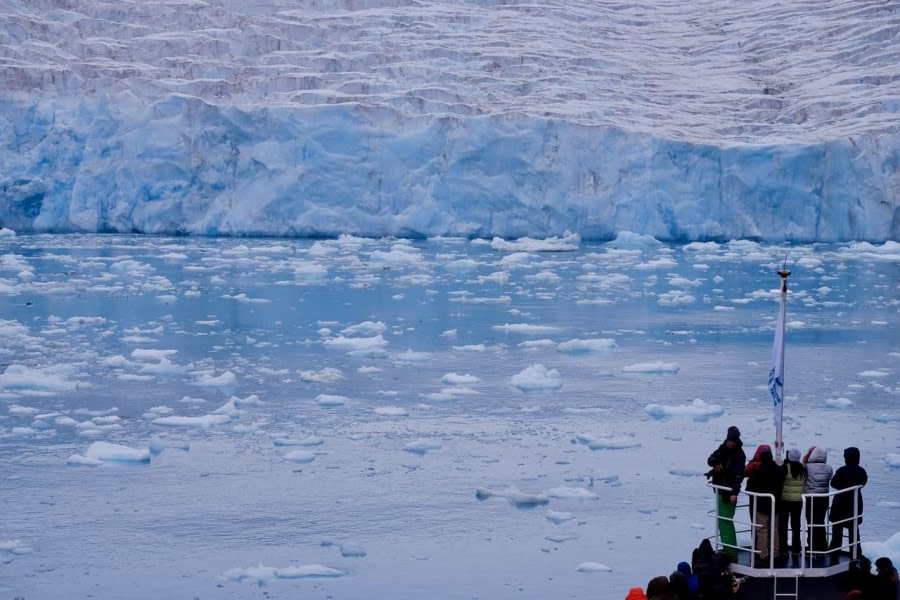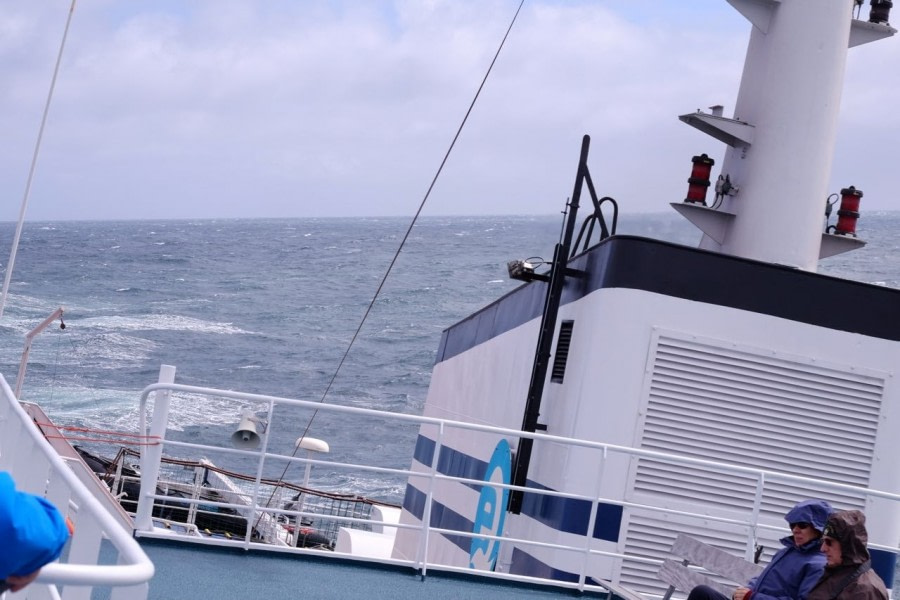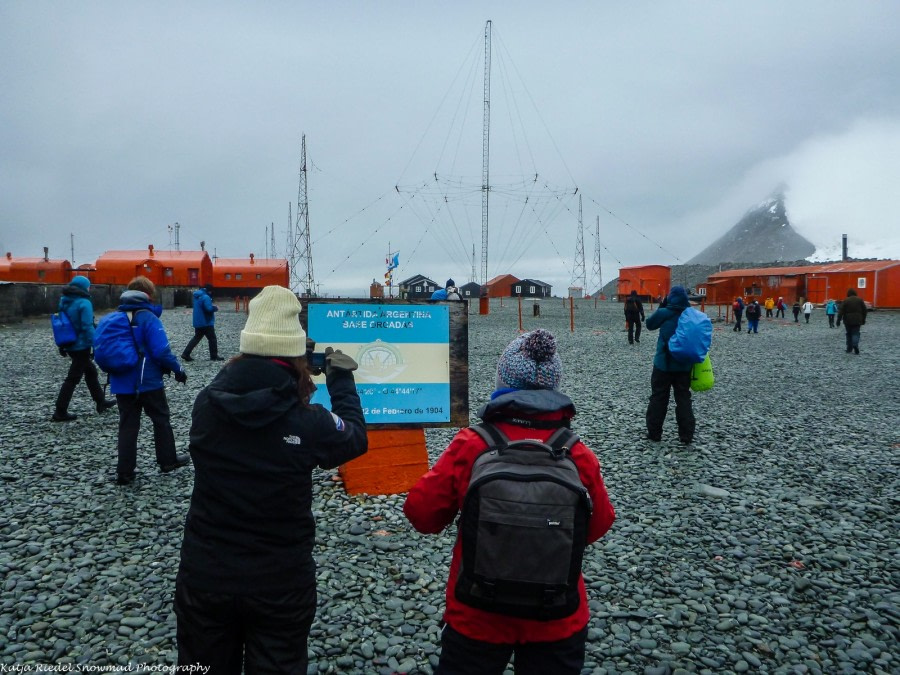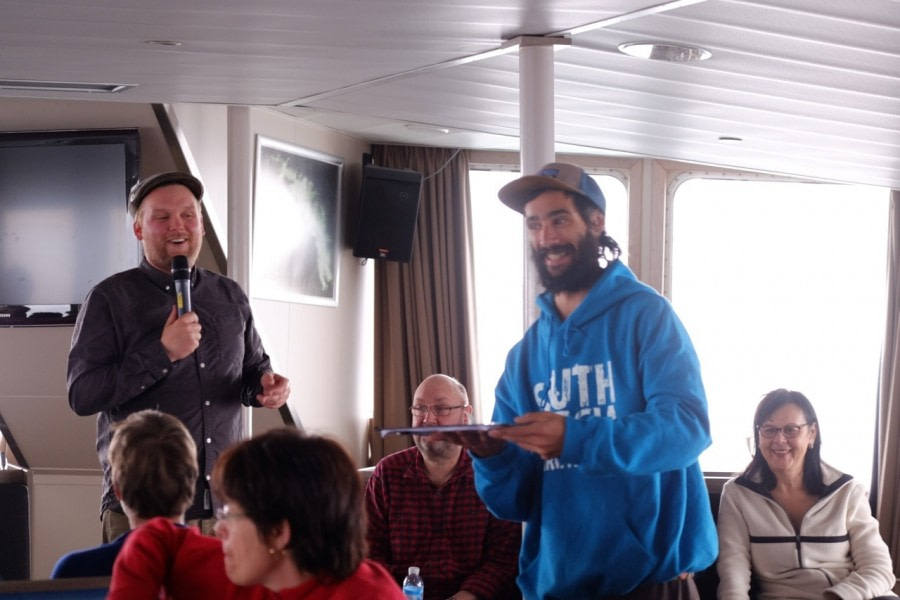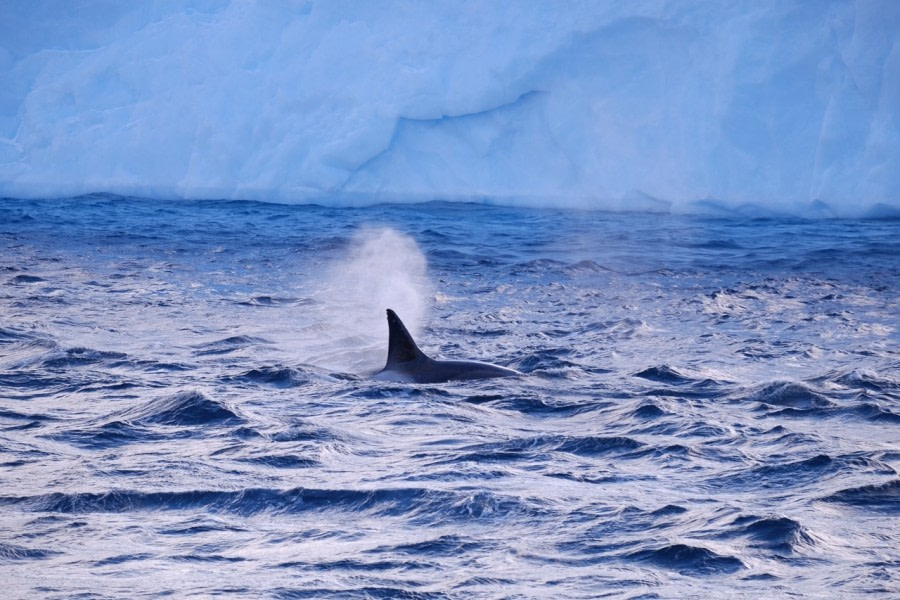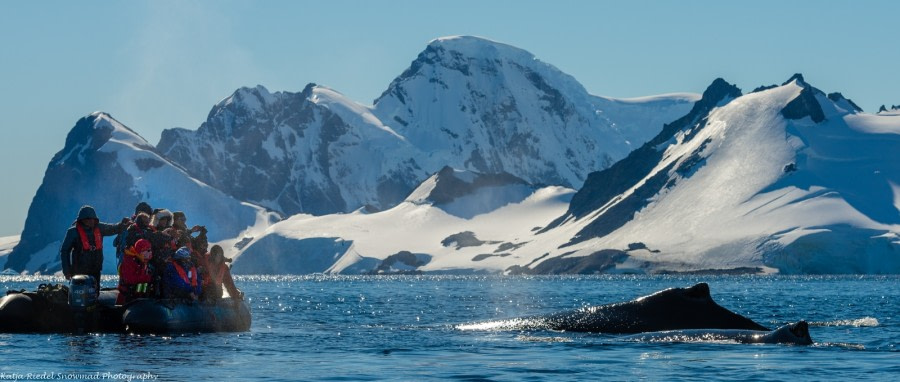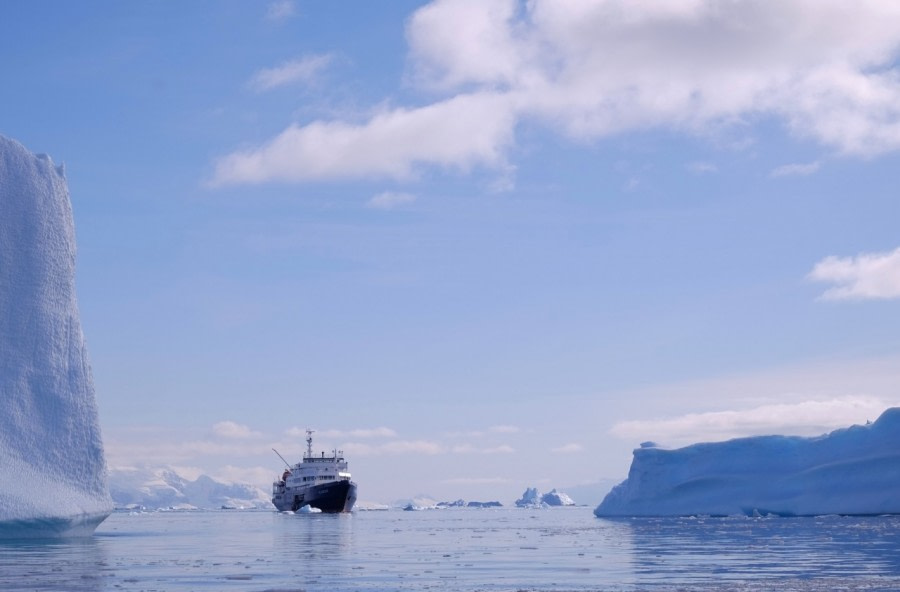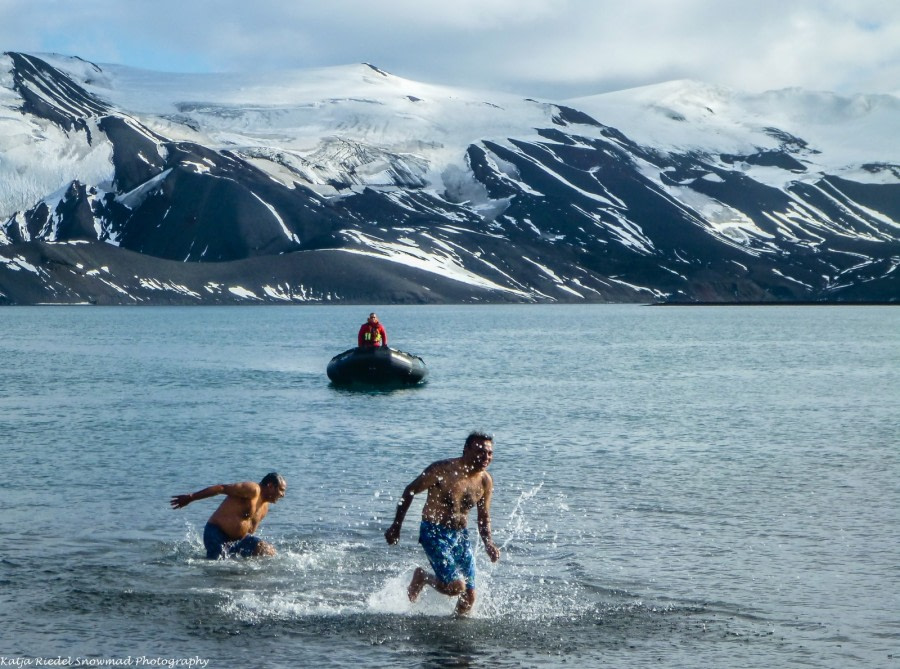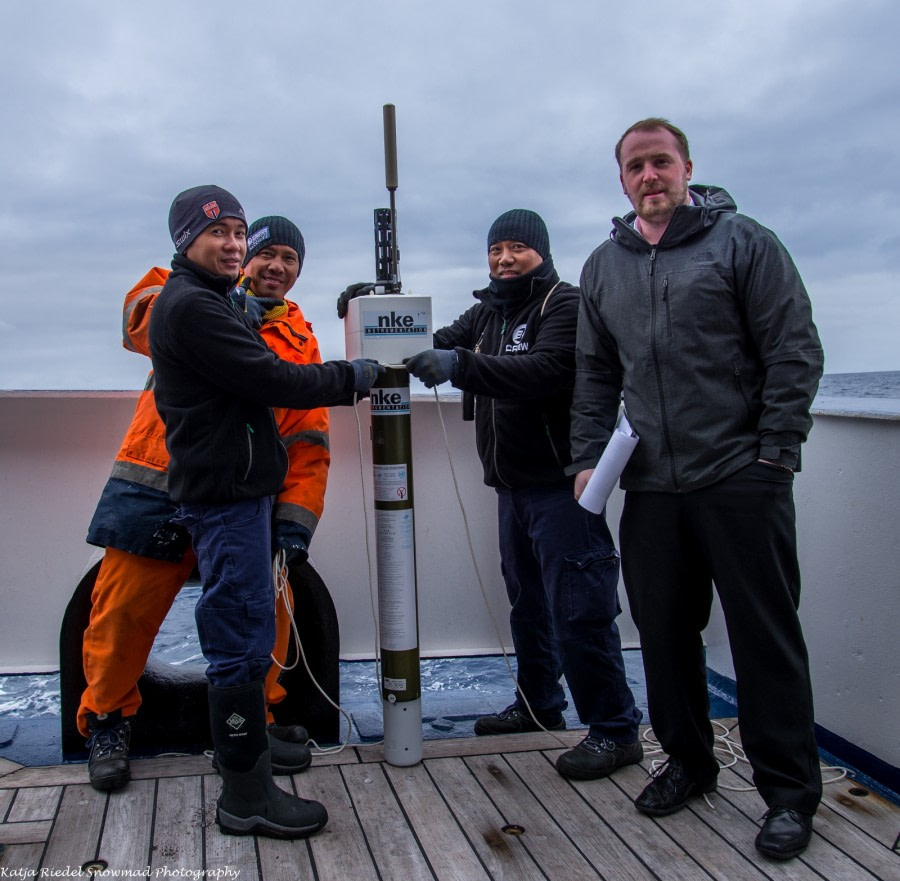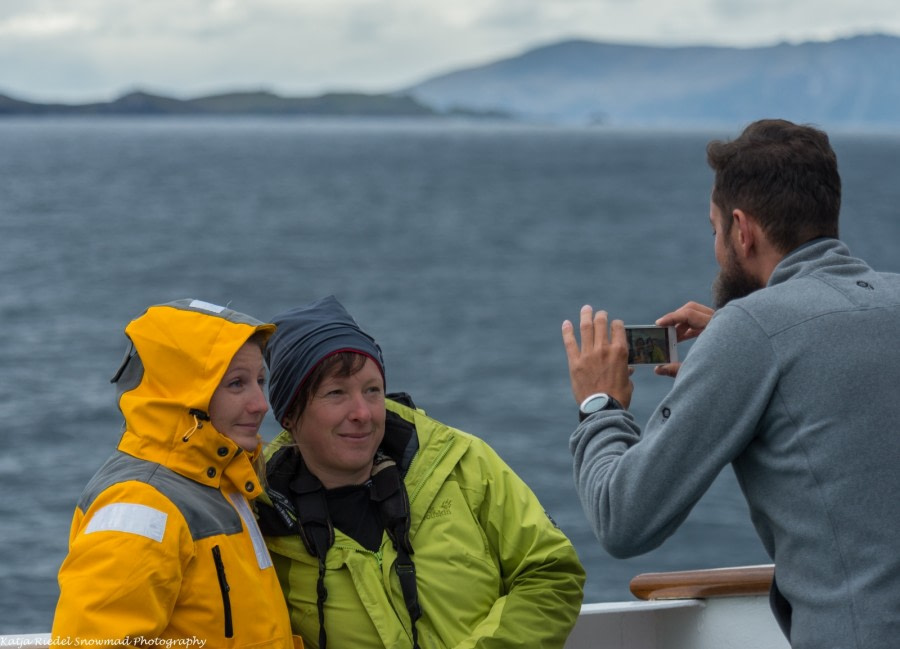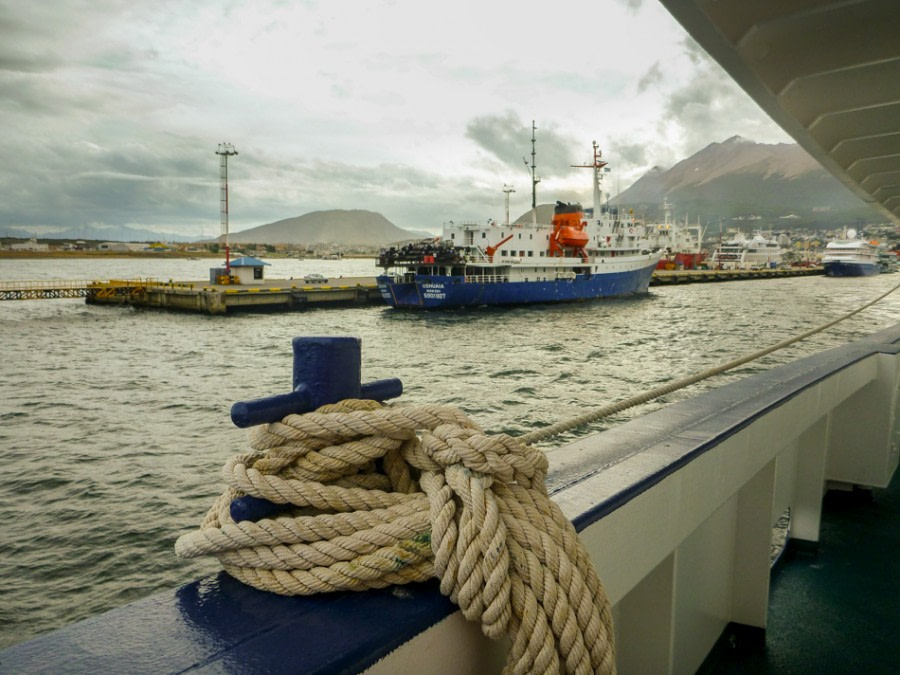| Date: |
01.03.2017 |
| Position: |
64°40’S / 062°37’W |
| Weather: |
Clear |
| Air Temperature: |
+3 |
Next time when you are stuck in a traffic jam, or when a work colleague annoys you, or when you had a fight with your spouse, remember this day! It was a perfect day. There won’t be too many like this in your life, so treasure it, keep it in your memory forever. It started with a beautiful sunrise in the Gerlache Strait. The sky was coloured with pastel pinks and blues. Then the top of the peaks started to glow in shades of orange before liquid gold was poured out over all the mountains. Whales, sleeping at the surface, exhaled with large blows that looked white in the low light of the early morning sun.
The dark lump of Cuverville Island came soon into view. After the anchor was dropped Zodiacs sliced the flat surface of the sea and delivered their load to the black cobbled beach. Here Gentoo Penguins and their nearly grown up chicks entertained us with their antics. There were food chases when parents came back from the sea with a glistening belly full of krill and fish, there was a lot of preening and one lone Chinstrap Penguin wandered around the Gentoo colony and picked a few fights. Fur seals played in the water or snarled at us on the beach. The sky was filled with Antarctic Skuas and Kelp Gulls with their eerie cries. Glaciated mountains and fantastically shaped icebergs provided a spectacular backdrop for the show. The sun was shining and in the absence of any wind, it was pleasantly warm.
After some time ashore it was time to get into the boats for a Zodiac cruise. Past serrated blue icebergs we zoomed to the middle of the Errera Channel where we met three inquisitive Humpback Whales. The Latin name for Humpback Whale is Megaptera novaeangliae, the large winged one, and we could truly see their large white pectoral fins shimmering in the blue water below us. The whales came so close that we could make out their eyes, their tubercles (bulbous hair follicles at the jaws) and the Barnacles on their skin. Some of us got even splattered by whale snot, an experience not many Antarctic visitors get. It is it hard not to get emotional when encountering these graceful creatures in the wild. Our reactions ranged from speechless, gasping for air to silly grins spreading from one ear to the other. Only reluctantly did we come back to the PLANCIUS.
During lunch the ship relocated to Paradise Bay. Needless to say; we encountered many more Humpback Whales. Our destination for the afternoon was Base Brown in Skontorp Cove. While half of us went ashore the other half went on a Zodiac cruise past the Skontorp Glacier, where we saw big chunks of ice breaking off. Blue-eyed Shags (also called King Cormorants) nested in the cliffs above Base Brown. On the ice floes in the bay we spotted dozing Crabeater Seals and on snowy patches on land Weddel Seals were hauled out. The icebergs we encountered on our cruise were also mind-bogglingly beautiful, like pieces of art.
The Argentine Base Brown burned down in 1984, but has been used again in the last few years. However, when we arrived, it was deserted, boarded up for winter und handed over to the Gentoo Penguins which nested around the buildings. Fat chicks were panting in the hot sun. The walk to a view point was certainly worthwhile, a tranquil panorama of icebergs in Skontorp Cove enfolded in front of us while we basked in the sun. After dinner another highlight waited for us, a scenic cruise. As PLANCIUS sailed into the sunset an iceberg like a castle came into view. Through a big arch golden sunlight was reflected. Captain Evgeny Levakov, a photographer himself, manoeuvred the ship so that with some luck the sun would set right behind the arch, but it was not to be, another part of the iceberg obscured the arch. So we just watched as the orange sky turned to pastel pink and blue.

